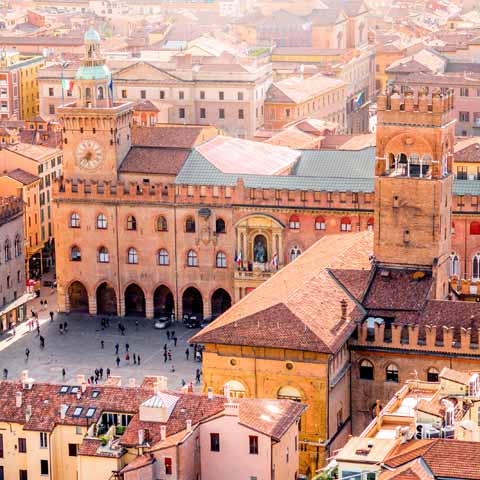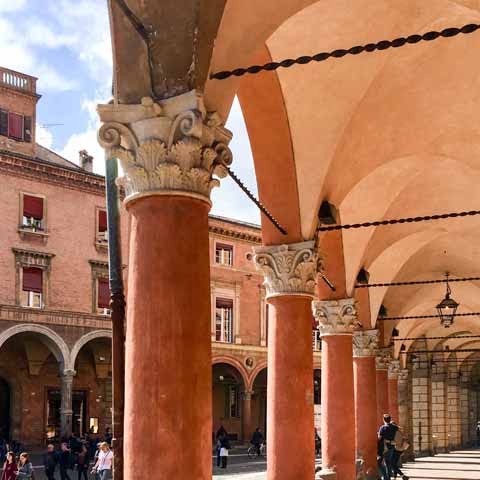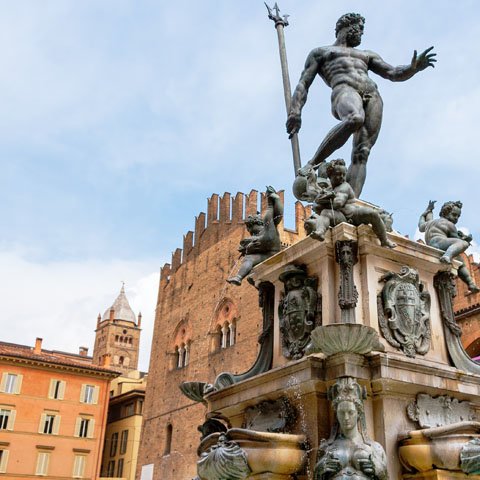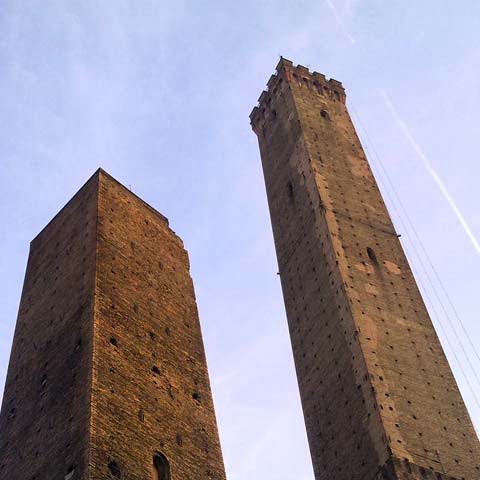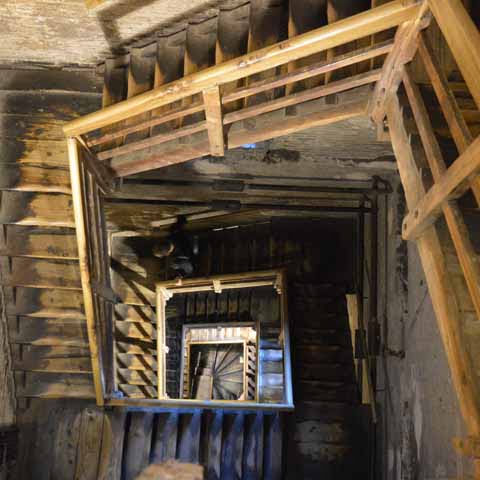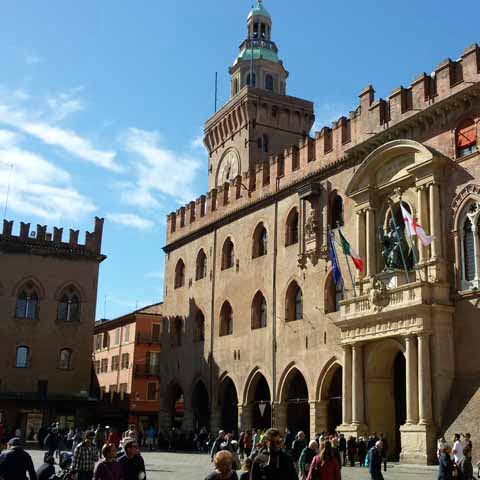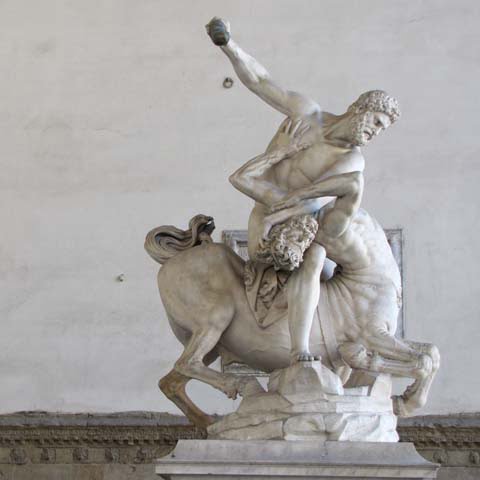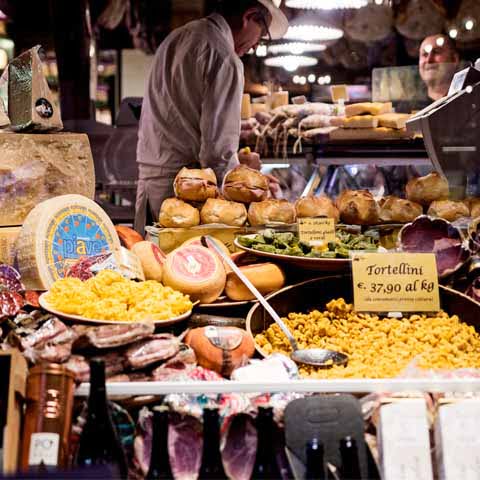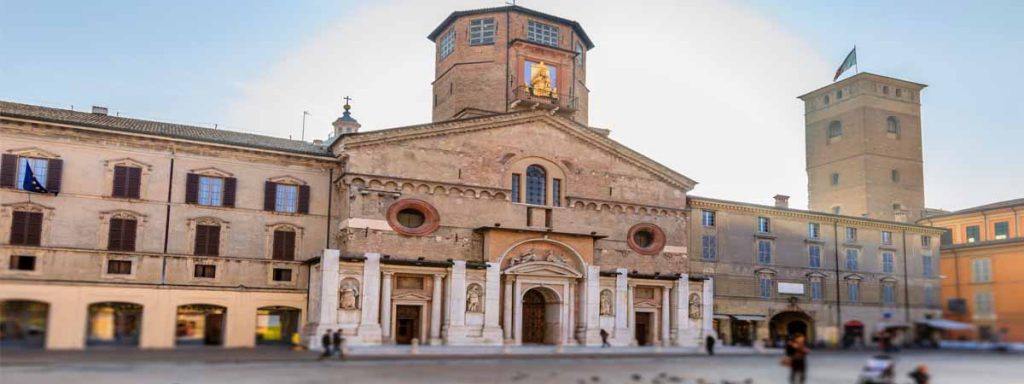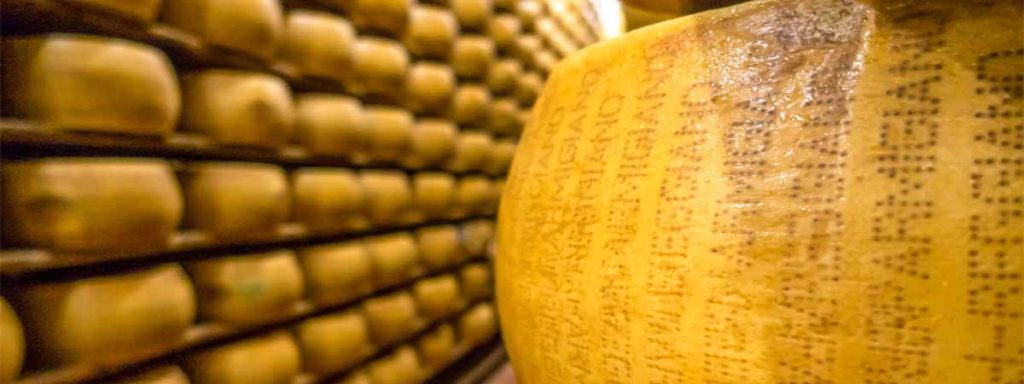The city of Bologna in Northern Italy is a vibrant center of activity and in many ways a city that seldom sleeps. With a dense population, much of which is composed of students attending the University of Bologna, the area is often humming with activity, day or night. Although Bologna has one of the oldest historical centers in Italy and much of the tradition and culture has been preserved, there is also a modern movement and warmth about the people that attracts visitors from across the globe.
FESTIVAL AND EVENTS IN BOLOGNA
With many piazze and a large student population, it is quite common to stumble upon celebrations of music, dance and art, as well as interesting markets and trade shows.
In January, locals and visitors alike enjoy Artefiera, one of the longest running art shows in Italy. This cultural event is an international exhibition and market of contemporary art. Expect to see up to two hundred fifty exhibiting galleries at this event, as well as a number of beautiful works of art.
The Angelica Festival is a celebration of international music. The event attracts musicians from all over the world and has done so since 1991. The festival is typically held in the months of May and June each year with a focus on contemporary and experimental music.
The city is also known for the Bologna Jazz Festival, which is held each November. Founded in 1958, this is the oldest jazz festival in Italy and every year the festival attracts the best jazz musicians in the world.
Another important music festival on the national level is the Zecchino d’Oro, which is also held in November. An annual event that dates back to 1959, the Zecchino d’Oro is a children’s music festival showcasing Italian songs written for children, with some international songs being featured in the competition as well. Broadcast on national television each year, the event has become a symbol of cultural heritage for many generations of Italians.
Every year on the Saturday before the 5th Sunday following Easter, the historic Discesa della Madonna di San Luca takes place. The event is one of the most important religious festivals in the area and holds great meaning for locals. During the event, an image of the Madonna from the Santuario della Madonna di San Luca is brought down into the city along the Portico di San Luca, the roofed arcade that connects the Sanctuary to Bologna. Once in the city, the procession passes through several key landmarks such as Piazza Nettuno and Piazza Maggiore before arriving at the Cathedral of San Pietro. The icon remains in the cathedral until it is brought back up to the sanctuary via a solemn procession on the Sunday of the following weekend.
In September, locals and visitors can take advantage of the dry and warm summer weather to take part in Danza Urbana. The event is an international dance festival that introduces different forms of dance throughout key piazze in the city. This particular event is a great deal of fun for onlookers, and chances are they will see a different dance each time they visit a different square.
Bologna is known for a couple of motorcycle and automotive-based events. For instance, the Autodromo Internazionale Enzo e Dino Ferrari in Imola (located about 26 miles from Bologna) hosts a round of the Superbike World Championship each year in May.
The city of Bologna is also an important stop on the route of the Mille Miglia Race, which is also held in May. Founded in 1927, the original event was an endurance car race that covered approximately 1,000 miles. After being discontinued in 1957, the event was reimagined as a racing competition for historic cars starting in 1977. The new race unfolds over the course of several days and typically follows the route of the historic race from Brescia to Cervia Milano Marittima down to Rome then back up through Bologna before returning to Brescia. Only historic cars produced up to the year 1957 that were registered in the original race can participate in the modern Mille Miglia.
Another unique event hosted in Bologna is the BilBOlbul International Comic Festival. Held every year in March, the festival is dedicated to comics presenting the work of established artists, as well as Italian and international young artists. The festival takes place over a period of three days and features workshops, exhibits, and meetings with leading artists.
Showcasing the city’s modern side, the Cheap Festival was founded in 2013. The event is a celebration of street art with a focus on regenerating the urban landscape.
Finally, Bologna also hosts several festivals and events related to cinema throughout the year. Among these is Sotto le stelle del Cinema, which is held each summer in Piazza Maggiore. During the month of July, Piazza Maggiore is transformed into an outdoor cinema with films displayed on a large screen.
Also occurring during the summer is Il cinema ritrovato, which is dedicated to classic films of the past, from the very beginning of cinema to the 1960s. A multi-day event organized by the Cineteca di Bologna, the festival focuses on films that have been recently restored. Two other important film festivals hosted by the city of Bologna include the Biografilm Festival, which takes place in June and is dedicated to biopics, and the Future Film Festival, an April event that centers on traditional and digital animation as well as the development of special effects.
OUTDOOR
Piazza Maggiore is one of the oldest and most crowded outdoor squares in Bologna. The square is in the historic center of the city and is always a hub of activity that sometimes features seasonal markets, outdoor movie showings, dance exhibitions, and art fairs. Piazza Maggiore is a favorite meeting place for locals and a fantastic place to people watch, admire the Fountain of Neptune, and enjoy an impromptu musical concert.
While in the area of Piazza Maggiore, several of the landmarks you may want to add to your itinerary can include the Basilica of San Petronio, the “two sisters” towers of Asinelli and Garisenda, and the palaces of Notai, Re Enzo, Podestà, and Accursio. The palaces located in Piazza Maggiore are all historic administrative buildings with architecture that is representative of their respective time periods.
The Palazzo dei Notai is a thirteenth century medieval structure located in the heart of Bologna’s city center. It was once the home of the Notary order as evident by the symbol of inkwells and goose feathers on the exterior of the building.
Another palace located in Piazza Maggiore is Palazzo Re Enzo. This thirteenth century building was once the home of prisoner King Enzo of Sardinia. The arches, battlements, and fifteenth century stairway are classic examples of Gothic architecture.
The Palazzo del Podestà is also located in Bologna’s Piazza Maggiore alongside the bell tower known as Torre dell’Arengo. The building is prominently located within the square and was the first to house the city government.
Last is the Palazzo D’Accursio or Municipal Palace, a complex named after esteemed medieval jurist Accursio. The main building is estimated to be from the thirteenth century with various additions, such as the fifteenth century tower clock. Most notably, Palazzo D’Accursio has served as Bologna’s city hall since 1336. Be sure not to miss the adjacent chapels and loggia-halls.
When touring most Italian cities, wandering the city on foot is usually the best way to take in the local sights and sounds. But Bologna is not just any city. While in Bologna, the most unique way to see the city is by following the porticoes. The twenty-eight miles of covered walkways are the city’s most defining characteristic and allow visitors to see the highlights of the city center while protected from the elements. The porticoes are a charming addition to the city that create a truly distinctive experience.
Markets are a favorite activity for locals and visitors alike. The Quadrilatero area is the site of one of the oldest markets in Bologna. Extending from Piazza Maggiore to Due Torri, the ancient market has been home to Bologna’s great artisans since the Middle Ages. Over the decades, the area has become a hotspot for foodies looking to taste local specialties, from cured meats and cheeses to handmade pasta and sweets. The market is usually noisy and one of the best ways to immerse in the local culture.
INDOORS
One of the most unique and possibly challenging indoor activities in Bologna is climbing to the top of the Asinelli Tower, one of twenty remaining medieval towers still standing in the city. Be advised to wear good walking shoes as you will need them when climbing the circular staircases featuring almost five hundred wooden steps. For those that need to rest, there are some platforms located in between flights of stairs. The reward for climbing the three hundred and eighteen foot tower is a picturesque view of the city below that is hard to beat.
Torre Garisenda, a sister to the Torre degli Asinelli, was erected in the twelfth century around the same time as Asinelli. This tower is, however, almost one hundred fifty-five feet shorter and features a steep overhang that is scheduled to undergo restorations. Cited in Dante’s Divine Comedy, Torre Garisenda is known for its distinct slant that is more dramatic than that of the Asinelli Tower.
Do not miss visiting the campus of the University of Bologna, which is said to be the oldest university in the Western world. The origins of the university date back to 1088 when experts in rhetoric, grammar, and logic came together. Today the university has five campuses, five schools, thirty-two departments, two hundred and thirty-two degree programs, eighty-four international degree programs, and forty-eight PhD programs. The campus is one of the most beautiful in Italy and has a large amount of green space where students can relax.
The Bologna Archaeological Museum in Piazza Maggiore is among the best of its kind. It houses exhibits detailing local history starting from the prehistoric period and extending through the Roman Age. It also features a section on the Egyptians as well as a Numismatic Collection and a Collection of Plaster Casts. With so many eras, the number of artifacts such as pottery, tools, skeletal remains, china, marble statues, and weaponry is extensive.
The Pinacoteca Nazionale di Bologna or National Gallery of Bologna is not to be missed. The museum opened in the late nineteenth century and has been renovated some in the years since. The gallery features artwork from Italian artists such as Guido Reni, Raphael, Tintoretto, Perugino, Guercino, and the Carracci family. A variety of exhibits and activities can usually be found here year-round.
Bologna is also home to many beautiful churches, one of which is the Basilica of San Petronio. The origins of this church are from the late fourteenth century, but due to financial constraints, the building is still largely unfinished. This the largest and perhaps most prominent church in the city featuring several naves and more than twenty chapels. The Basilica is home to art by Parmigiano, Francesco Francia, and more.
The Metropolitan Cathedral of Saint Peter was named as such by Pope Gregory XIII in the late sixteenth century, but the building’s origins date back to the tenth century. This church is home to paintings by esteemed Italian artists, such as Prospero Fontana, fourteenth century artifacts, and the second tallest bell tower in the city.
The Santo Stefano complex is nicknamed the seven churches because it is comprised of several buildings that are more spread out. Although there is dispute over the exact origins of the complex, it is estimated most buildings date from between the tenth and thirteenth centuries. This area is possibly the most unique church formation in Bologna.
The thirteenth century Basilica of San Domenico is stunning and features art masterpieces by Ludovico Carracci, Guercino, and Filippino Lippi. Visitors can also enjoy sculptural additions to the ark by artists such as Michelangelo, Alfonso Lombardi, and Nicola Pisano. The church is also home to a wooden choir, a one hundred sixty-seven-foot bell tower, and a fantastic Dominican library.
Another important religious structure is the Sanctuary of the Madonna di San Luca. Perched on Monte della Guarda outside of Bologna’s historical city center, the best way to reach the church is to follow the roofed arcade that spans more than two miles and is believed to be the longest of its kind in the world. After making the trek up to the church, visitors will be rewarded with panoramic views of the countryside outside of Bologna, as well as the opportunity to admire the treasures of the church including renowned works by artists such as Guido Reni, Guercino, and Donato Creti.
FAMILIES
Mercato delle Erbe is the largest covered market in Bologna’s historical city center. Founded in 1910, the area is popular amongst locals and travelers for buying food such as meat, cheese, fruits and vegetables, and wine. In addition to stands selling local goods, there are also small dining options available. The market, held in Via Ugo Bassi, is busy during the day but also attracts crowds during the evening as passersby eat and drink at the restaurants that remain open into the night, long after the produce stands have closed.
La Piazzola Market is Bologna’s weekly market that takes place in Piazza del Mercato every Friday and Saturday. The open-air market has roots tracing back to the mid thirteenth century. It is estimated to now have as many as four hundred booths with goods like shoes, clothes, jewelry, pottery, and even flowers on sale. The market is a joyful atmosphere of color and noise and offers excellent treasure hunting.
KIDS
Although many of the outdoor and indoor activities are excellent for the children, such as a visit to the Sanctuary of the Madonna di San Luca, if you are looking for something a little different, head to the tiny Via Piella. This hidden spot offers one of the most unique views in the entire city. As you approach a wall along the street you may hear the sound of running water. Upon closer inspection you will find a small window that when opened provides a picturesque glimpse of one of the canals that runs through Bologna’s city center.
To enjoy some time outdoors, stop by Giardini Margherita, a large park located just outside of Bologna’s historical city center. Featuring a small lake complete with fish and ducks, the park is a great place to unwind after sightseeing. Additionally, the park is home to a Villanovan hut, which is a reproduction of the historic huts that were once found in Bologna during the Etruscan period.
Bologna’s many museums also offer plenty of fun activities for families with children. One example is the Museo realtà virtuale or the Virtual Realty Museum. This interactive museum functions as a time machine taking curious visitors back in time to medieval Bologna. With the use of VR headsets, families can explore detailed 3D reconstructions of historic scenes walking through the streets of the past and admiring Bologna’s medieval towers in all their glory. The museum also features virtual reconstructions of Tutankhamun’s Tomb and Bologna during the Roman Era.
ONLY IN BOLOGNA
The porticoes are perhaps the defining characteristic of the city of Bologna, so it seems only fitting that they are a part of the journey to Monte della Guardia. What is thought to be the longest portico in the world leads up to a beautiful grassy hill, Monte della Guardia. From there, visitors can climb the slope to the very top for a fabulous hilltop view of the city. While there, be sure to admire the amazing architecture of the Sanctuary of the Madonna di San Luca, one of the most unique churches in Bologna.
There is an endless list of fun and exciting things to do and places to visit in Bologna. Many of the city’s architectural monuments such as leaning medieval towers and ancient churches offer enchanting experiences. Visit the city for a few days and let the beauty of Bologna captivate your heart and mind forever.
As the former central building of the University of Bologna, the Archiginnasio is one of the city’s most important historical buildings. Bologna’s Municipal Library has been located inside the Archiginnasio since the mid nineteenth century. It is an iconic landmark within the city. The Anatomical Theater also housed inside was built in 1637, although both the Anatomical Theater and the Archiginnasio in general sustained extensive damage during World War II. The building has since been restored to its former glory.
Don't just see Italy, live it.
Your dream trip to Italy has never been closer
No more endlessly scrolling travel sites. Our travel experts will craft the perfect, one-of-a-kind trip just for you.

300+
DESTINATIONS
We offer more Italian destinations than any travel site. Do and see more with Trips 2 Italy.
1 (of a kind)
ITINERARIES
Because your dream trip to Italy should be designed for you, not for the masses.
100%
PEACE OF MIND
From flights and accommodations, to food and activities - we take care of every detail.
